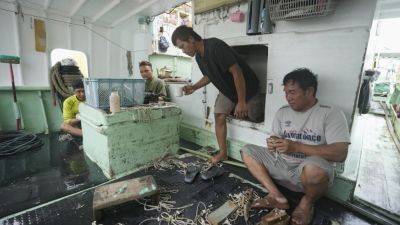A Plant That Flowers Underground Is New to Science, but Not to Borneo
As a group of European botanists prepared to travel across Borneo by motorboat and four-wheel-drive vehicles, they heard about a species of palm with an extremely rare quirk.
It flowers underground.
The palm, Pinanga subterranea, is one of 74 plants that scientists from the Royal Botanic Gardens, Kew, in London named as new to science last year, thrilling some in the botany world. The botanists who went plant-hunting in Southeast Asia six years ago were not expecting to find it.
But the plantis not hard to find: It grows abundantly on Borneo, the third-largest island in the world, which includes parts of Indonesia and Malaysia. It is also not “new” because local Indigenous groups have known about it, two representatives for those groups said in interviews.
In that sense, the “discovery” of Pinanga subterranea is an example of conventional science catching up with Indigenous knowledge.
“We have described this as new to science,” said William J. Baker, the most senior scientist on the trip. “But the preexisting knowledge about this palm is layered, and was already there before we even got anywhere near it.”
Over the past 30 years, non-Indigenous scientists have turned more to Indigenous knowledge to expand or test their research, with varying degrees of sensitivity.







